
Graduate shows 2015: a pair of Royal College of Art graduates have created a new way to climb trees – strapping steps around the trunk to form a spiral staircase up to out-of-reach branches.
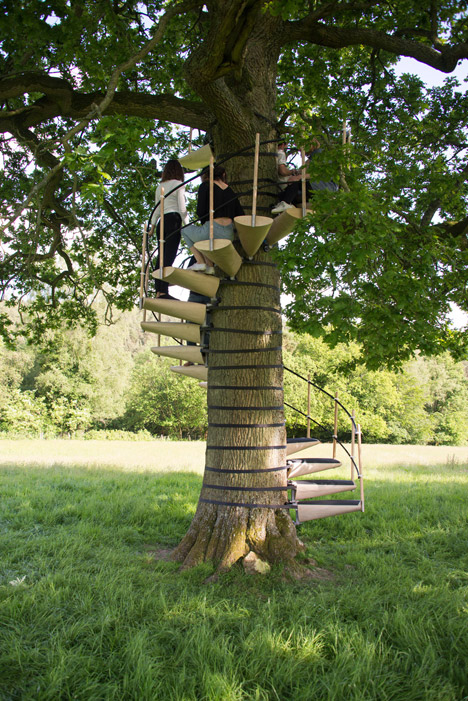
Thor ter Kulve and Robert McIntyre's CanopyStair comprises modular wooden platforms made from curved birch plywood, typically used to build small aircraft.
When bound to a tree trunk with adjustable woven ratchet straps at
staggered heights and orientations, the modules can be used as steps.
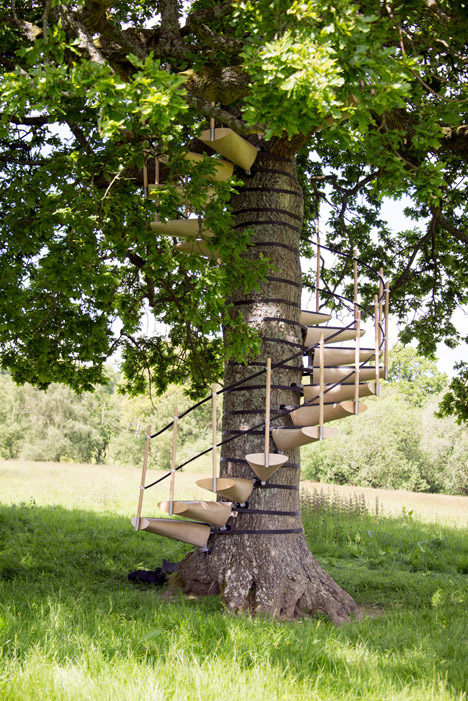
"Since tree trunks are all unique we had to design a system that
would adapt to their uneven surfaces, whilst not harming the tree in any
way," Ter Kulve told Dezeen.
One end of the step has a triangular profile, where thick neoprene
pads mounted on sand-cast aluminium joints at each corner create three
soft contact points with the tree.
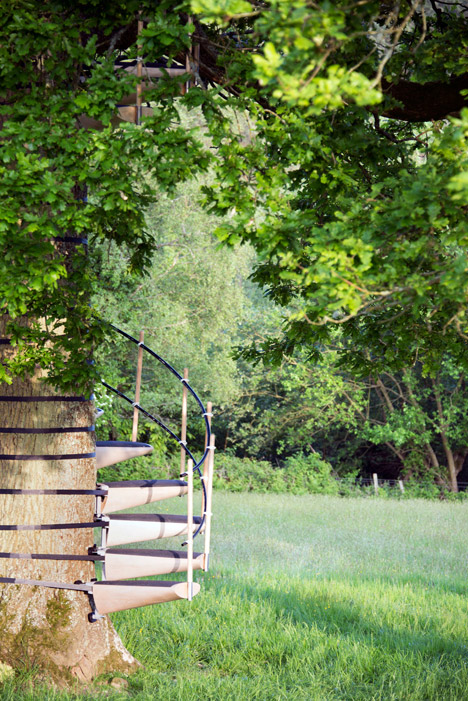
"We have worked with the arboriculturalists at Hampstead Heath to ensure we are not damaging the tree," said McIntyre. The curved shapes of the steps were designed to help the elements to
appear straight even if they are slightly uneven when installed as a
spiral set.
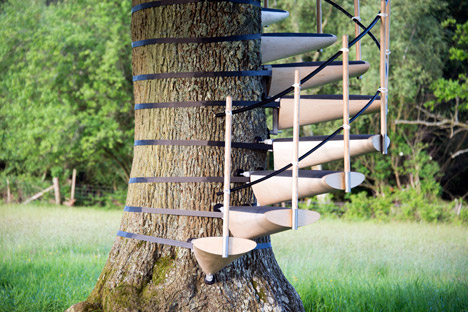
Ash poles attached to the end of each step can be strung together
with lengths of flexible plastic to create a balustrade. Each tread also
has a coarse top surface for better grip. "As one climbs the steps, the slight curve on the top surface of the
tread acts to 'cradle' your foot, adding to the sense of security," Ter
Kulve said.
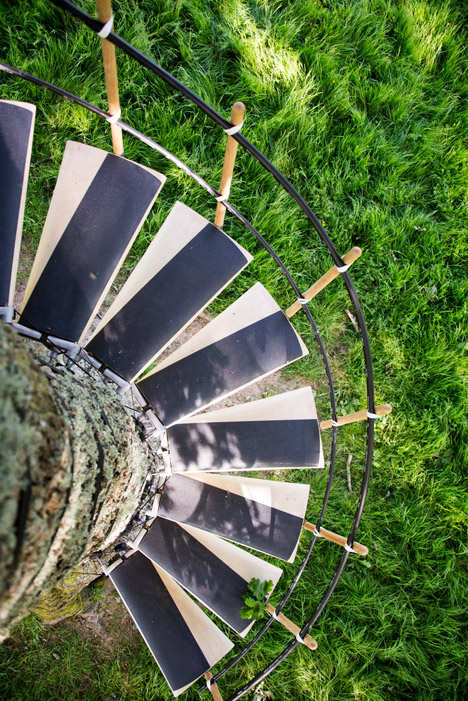
Kulve and McIntyre, who both studied on the RCA's Design Products
course, came up with the idea for the CanopyStair while spending time on
an island in the Portuguese Azores archipelago last year. The house they stayed at was surrounded by a high wall, blocking the
property's sea views, so the pair shimmied up a tree to get a better
vantage point.
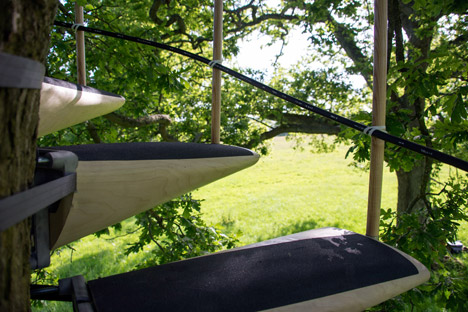
"Only by climbing a tree in the garden could we watch the sun setting
across the ocean," McIntyre told Dezeen. "We began to discuss ways of
transforming a garden tree into a staircase, allowing us to walk up and
down easily and enjoy the view." To alleviate safety issues with installing the higher treads, the
designers suggest using simple rock-climbing equipment to secure whoever
might be at risk of falling.
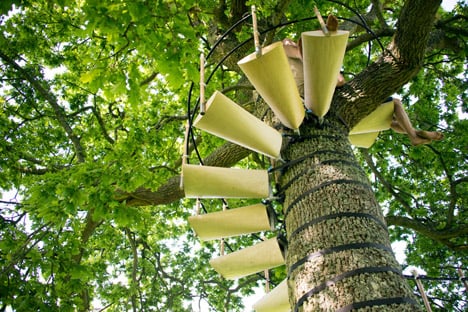
Installation times vary depending on the desired height on the
staircase. "To set up a seven-metre-high staircase would take about
three hours with two people," Ter Kulve said. "Taking that down would
take about 30 minutes."
The duo hopes that providing an easy route up trees will encourage the exploration of their upper reaches."The canopies of trees are the least explored ecosystem on the planet
– we know less about them than we do the deep ocean," said McIntyre.
"On climbing the CanopyStair, one enters this secret world, and it is
somehow mesmerizing."
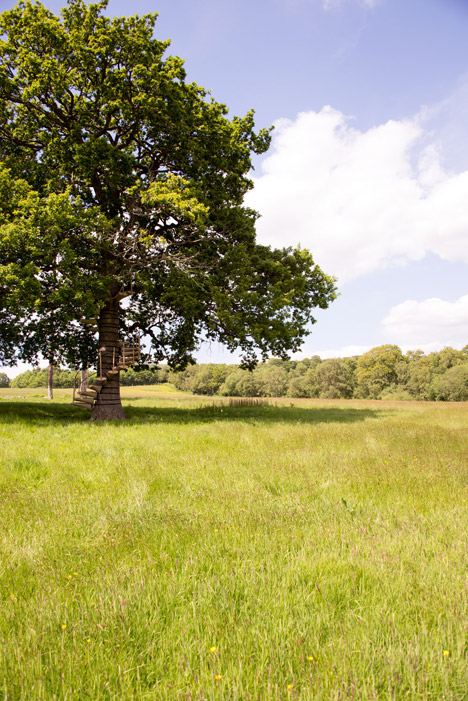
A prototype CanopyStair, created with the support of London architecture studio Haworth Tompkins,
was successfully erected and used in Sussex. It has now been installed
outside the RCA's Kensington campus as part of this year's graduate
exhibition.
Photography is by Tony McIntyre.
No comments:
Post a Comment